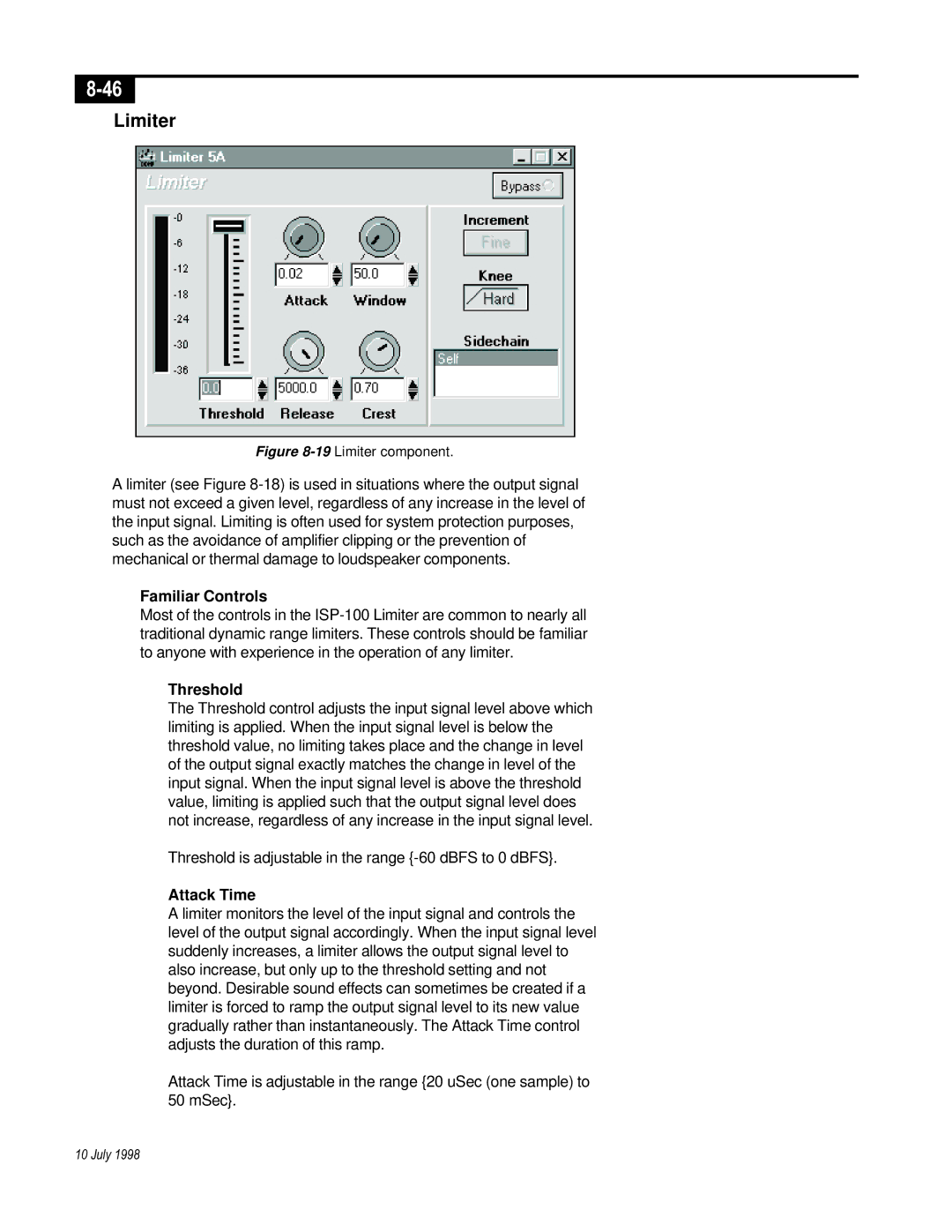
Limiter
Figure 8-19 Limiter component.
A limiter (see Figure
Familiar Controls
Most of the controls in the
Threshold
The Threshold control adjusts the input signal level above which limiting is applied. When the input signal level is below the threshold value, no limiting takes place and the change in level of the output signal exactly matches the change in level of the input signal. When the input signal level is above the threshold value, limiting is applied such that the output signal level does not increase, regardless of any increase in the input signal level.
Threshold is adjustable in the range
Attack Time
A limiter monitors the level of the input signal and controls the level of the output signal accordingly. When the input signal level suddenly increases, a limiter allows the output signal level to also increase, but only up to the threshold setting and not beyond. Desirable sound effects can sometimes be created if a limiter is forced to ramp the output signal level to its new value gradually rather than instantaneously. The Attack Time control adjusts the duration of this ramp.
Attack Time is adjustable in the range {20 uSec (one sample) to 50 mSec}.
